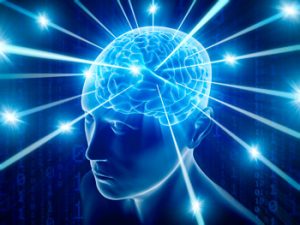 This powerful brain-based technique has been successfully helping clients around the world for more than 30 years.
Dr. Fibus believes that even the angriest individuals can learn to recognize and channel their anger through the development of better communication skills and other practical approaches. His counseling provides immediate, tangible results and long-lasting tools that can reduce anger and enhanced Neurofeedback, also known as EEG biofeedback, is what we call “brain training.” Just as a person might go to a gym to exercise the body, neurofeedback allows an individual to exercise the brain — even targeting specific areas for improvement.
This powerful brain-based technique has been successfully helping clients around the world for more than 30 years.
Dr. Fibus believes that even the angriest individuals can learn to recognize and channel their anger through the development of better communication skills and other practical approaches. His counseling provides immediate, tangible results and long-lasting tools that can reduce anger and enhanced Neurofeedback, also known as EEG biofeedback, is what we call “brain training.” Just as a person might go to a gym to exercise the body, neurofeedback allows an individual to exercise the brain — even targeting specific areas for improvement.
What does Neurofeedback do and how does it do it?
An electroencephalogram (EEG) is a simple electronic recording of a person’s brain waves. Using a little EEG paste, we attach small sensors to the scalp. The person won’t feel them, but they quietly read brain activity into a computer, which then translates that information so the person can view it on a monitor. As the person reacts to questions and conversation, the EEG shows us what’s going on with his or her brain waves. Most people find it pretty amazing! What’s more amazing is that an individual can learn to control brain activity, to stabilize reactions, through the video game training that’s part of neurofeedback. It’s easy, painless and even fun. As the individual slowly learns to regulate “automatic” reactions, the training experience spills over into daily life to help the person manage relationships, emotions and mental performance. For a free phone consult, call Dr. Fibus at 818.395.2831. Neurofeedback, also known as EEG Biofeedback or Neurotherapy, is a groundbreaking technique that challenges the brain to a higher level of performance. This powerful brain-based technique has been successfully helping clients around the world for more than 30 years. It is non-invasive and offers dramatic results for a multitude of symptoms.Our Testimonials
"I’ve been to a number of good therapists in my lifetime. Dr. Fibus’ approach is different than all of the others and I have gotten my best results with him."
"Dr. Fibus got us through a hard and unpleasant segment of our marriage. Despite the unpleasant aspects of the affair, we’ve learned how to address the issue and our marriage is now much stronger and healthier than before the incident."
"Dr. Fibus, your patience and compassion kept us in our chairs, but your skill and understanding of relationships guided us toward renewed commitment that will last a long time. We are deeply grateful for your help."
How it works
We “listen in” on brainwave activity through electrodes applied to the scalp—a painless, non-invasive procedure you may be familiar with if you’ve ever had an electroencephalogram (EEG). We then process the signal by computer and extract information about key brainwave frequencies. We show the ebb and flow of this activity back to the person, who attempts to change their brain’s activity level, increasing or decreasing it, depending upon the specific focus. We present this information to the person in the form of a game, so the person is effectively playing a game with his or her brain. Eventually the brainwave activity is “shaped” toward more desirable, more regulated performance. The frequencies we target and the locations on the scalp where we listen in on the brain are specific to the individual and to the conditions we are trying to address.
How long does it take?
Each session depends on the treatment.
How long does it last?
Neurofeedback involves learning by the brain and if that brings order out of disorder, the brain will continue to use its new capabilities, and thus reinforce them. Matters are different when we are dealing with degenerative conditions, like Parkinson’s or the dementias, or when we are working against continuing insults to the system, as may be the case in the autism spectrum. In such cases the training needs to be continued at some level over time. Allergic susceptibilities and food intolerances make it more difficult to hold the gains. Poor digestive function will pose a problem, as does poor nutrition. A child living in a toxic environment (in either the physical or the psychological sense) will have more difficulty retaining good function.







